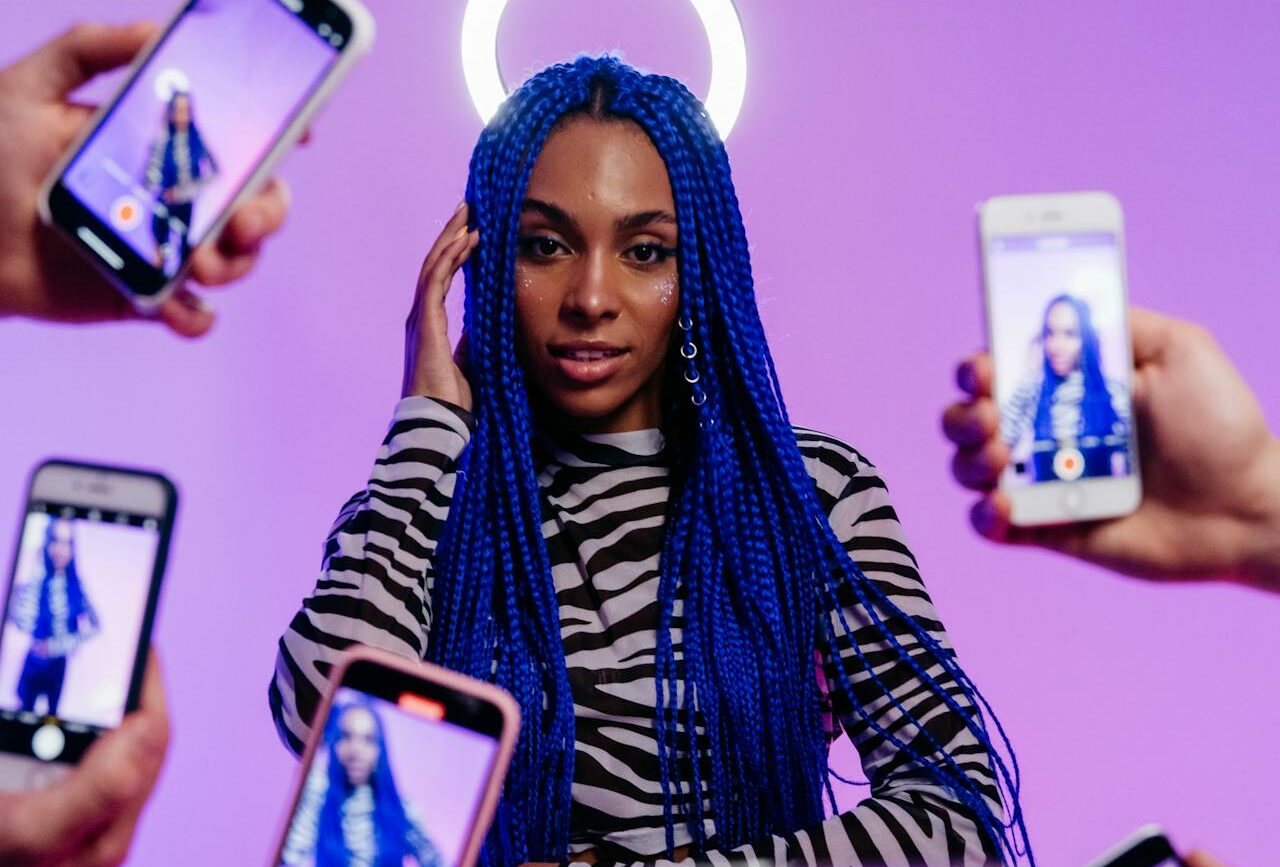Explore how men's grooming turned into marketing's newest battlefield, leveraging shame and redefining masculinity. Are today's men primping for pleasure or fear?

The Quick Fix: Shaping Modern Consumer Behavior
How marketing exploits the human desire for instant gratification
The demand for instant gratification has become a cornerstone of modern consumer behavior. From the second we wake up to the moment we crash, we’re surrounded by chances to get what we want, pronto. Social media, streaming services, and even food delivery apps are all about giving us that quick fix. The dopamine hit from these instant rewards keeps us hooked, and marketers know this game all too well.
This nonstop chase for quick satisfaction has totally warped our expectations. We’ve become impatient and demanding, wanting everything now. Technology caters to our every whim, making convenience our top priority over patience. Marketers are having a field day with this, constantly coming up with new ways to cater to our shrinking attention spans and endless cravings for instant results.
Solve all your problems instantly
Brands promise quick fixes to all our woes, whether it’s shedding pounds, getting flawless skin, or finding true love. Products and services boasting rapid results are a magnet for those of us craving immediate benefits. Just think of the flood of “lose weight fast” pills, “overnight success” business schemes, or “instant glow” skincare products out there.
These promises usually come with flashy marketing campaigns, complete with glowing testimonials, dramatic before-and-after photos, and influencer endorsements that make success look like a sure thing. The temptation to achieve our goals with little effort or time is hard to resist, pushing us to chase short-term wins over long-term sustainability.
As a result, the market is swamped with products that often offer superficial or fleeting results, leaving us in an endless quest for the next quick fix. This cycle feeds unrealistic expectations and drives continuous consumption, as each new solution only partially fulfills our deeper desire for real improvement.
Buy now, think later
Limited-time offers and flash sales whip up a sense of urgency that triggers impulse buying. When faced with the fear of missing out (FOMO), we’re more likely to make snap purchasing decisions without giving them much thought.
This tactic plays on the psychological principle of scarcity, where limited availability boosts a product’s perceived value. Marketers love to use countdown timers, limited stock alerts, and exclusive deals to crank up this sense of urgency, pushing us to act fast or risk losing out. The immediacy of these offers short-circuits our rational decision-making, making us prioritize instant gratification over careful consideration.
Social media has taken this to the next level, bombarding us with images of others enjoying exclusive deals and experiences. Influencers and friends flaunting their latest purchases make us feel we must join in to stay relevant or be part of the cool crowd. This social proof fuels impulsive buying, as our desire to fit in and avoid missing out often trumps practical concerns like budget constraints or actual need.
A perfect example of this is the Stanley Cup Craze. Just how many Stanley Cups does anyone really need? Yet, the hype and limited availability make us want to collect them all, highlighting the power of FOMO-driven marketing.
Convenience at a click
The rise of e-commerce and digital services means that consumers can get what they want with just a few clicks. This ease of access feeds into our craving for instant results. Subscription services, same-day delivery, and one-click purchasing are all designed to cater to our need for speed.
The convenience of these services has set new standards for consumer expectations, making speed and efficiency paramount. Amazon Prime’s promise of next-day or even same-day delivery, for instance, has reshaped the retail landscape, pushing competitors to enhance their delivery capabilities and meet the same high standards of immediacy.
Advanced algorithms and data analytics on e-commerce platforms personalize the shopping experience to an unprecedented degree. Recommendations based on past purchases, browsing history, and even time of day optimize the chances of a quick purchase, aligning perfectly with our immediate desires. Mobile shopping apps have also revolutionized the shopping experience by providing a seamless, frictionless pathway to purchase, often with integrated payment systems like Apple Pay and Google Wallet that reduce transaction time to mere seconds. This shift towards hyper-convenience not only boosts consumer spending but also reinforces the cycle of instant gratification, making it harder for us to return to more traditional, time-consuming shopping methods.
Additionally, subscription services across various sectors—ranging from meal kits and streaming platforms to beauty boxes and pet supplies—have capitalized on this trend. These services promise regular delivery of curated products or content, eliminating the need for repeated purchasing decisions and satisfying our need for continual, effortless fulfillment. This model ensures consistent revenue for businesses and locks us into a cycle of ongoing instant gratification, further entrenching the expectation for immediate access and delivery in everyday life.
Personalization and customization make us feel special
Marketers are data wizards, using personalized recommendations to make us feel seen and understood. This targeted approach speeds up our buying decisions because it feels like the product was made just for us. By analyzing everything from our browsing habits and purchase history to social media activity, they craft shopping experiences that feel bespoke. With targeted ads, personalized emails, and custom landing pages, our shopping journey is so tailored that it’s hard to resist those impulse buys.
This personalized marketing builds a sense of relationship and loyalty between us and the brand. When we get recommendations that consistently match our tastes, we start to trust the brand more, seeing it as attentive and responsive. This trust smooths out the buying process, reducing hesitation and leading us straight to checkout. Streaming services like Netflix and Spotify are pros at this, using complex algorithms to recommend shows and music that keep us hooked, saving us from endless scrolling.
But it doesn’t stop there. Personalized recommendations also include dynamic pricing, customized discounts, and loyalty rewards, making us feel exclusive and valued. This strategy not only boosts immediate sales but also fosters long-term loyalty, as we feel a deeper connection to brands that understand our unique preferences. They know exactly what to do to make us want their products, because we tell them all day long exactly what we love.
Instant feedback and rewards
Loyalty programs, instant discounts, and real-time feedback loops are like catnip for consumers, keeping us engaged and coming back for more. The rush from earning points, snagging discounts, or racking up likes on social media is addictive, tapping into the psychological principle of positive reinforcement. When we get an immediate reward for a behavior, we’re more likely to repeat it. For example, loyalty programs that offer points for purchases turn shopping into a game, motivating us to buy more to reach the next reward level. Similarly, instant discounts on future purchases make us feel like we’re getting a deal, encouraging us to return.
Real-time feedback loops, like those instant likes on social media, play a huge role in keeping us hooked. Every like, comment, or share provides instant social validation, which can be incredibly addictive. This continuous stream of positive reinforcement keeps us glued to our screens, exposing us to more ads and sponsored content. Brands capitalize on this by creating engaging content that encourages interaction, blurring the lines between social activity and consumer behavior.
Gamification elements in loyalty programs and shopping experiences take this engagement to the next level. Challenges, leaderboards, and badges make shopping more interactive and rewarding. Fitness apps, for instance, often use these elements to encourage regular use and build brand loyalty. By turning mundane activities into fun and rewarding experiences, brands keep us continuously engaged and invested in their products or services.
This constant cycle of rewards and engagement not only boosts sales and consumer loyalty but also fosters a deeper emotional connection to the brand. We start associating positive feelings and satisfaction with the brand, making repeat purchases and long-term loyalty more likely. However, brands need to strike the right balance, as over-reliance on these tactics can lead to consumer fatigue or perceptions of manipulation. By thoughtfully integrating these elements, brands can sustain engagement and foster genuine loyalty without overwhelming their customers.
The power and peril of instant gratification
The quick fix culture is here to stay, and marketers who understand how to harness the power of instant gratification are thriving in this environment. By leveraging our desires for immediate rewards, they shape our behavior and drive consumer habits in ways that were unimaginable just a few decades ago. We’ve handed marketers the keys to our preferences and behaviors through our online activities, social media interactions, and purchasing habits. Every click, like, and purchase provides them with valuable data, enabling them to refine their strategies and target us more effectively.
Our constant connectivity means that we are perpetually feeding this system. Whether it’s through mobile apps that track our shopping preferences, social media platforms that monitor our interactions, or e-commerce sites that analyze our purchase history, we are continuously providing marketers with the insights they need to craft irresistible offers and personalized recommendations.
This data-driven approach allows them to predict our needs and desires with remarkable accuracy, presenting solutions and products just when we’re most likely to buy.
While the power of marketing and instant gratification can be compelling, awareness is our strongest defense. Recognizing the tactics used to manipulate our behavior helps us make more informed decisions. Being mindful of the psychological triggers that drive impulse purchases can reduce the chances of falling into the quick fix trap. Instead of succumbing to the allure of immediate rewards, we can pause to consider whether a purchase aligns with our long-term goals and values.
Ultimately, the onus is on us to navigate this landscape with awareness and intention. Marketers will continue to evolve their strategies to capture our attention and drive our behavior, but by staying informed and conscious of their tactics, we can retain control over our choices. Embracing a more deliberate approach to consumption not only benefits our personal well-being but also challenges marketers to create value-driven and sustainable offerings. In this way, we can foster a healthier relationship with consumer culture, and find that middle path balancing the appeal of instant gratification with the wisdom of thoughtful decision-making.
They’ve got their hooks in you.
FADS rise quickly, burn hot and fall out. They say you’re fat, you’re no fun, you need to relax, and you might even die alone.
In fact, FADS bank on the fact that you already believe all of that.
Ready to learn how it works?


